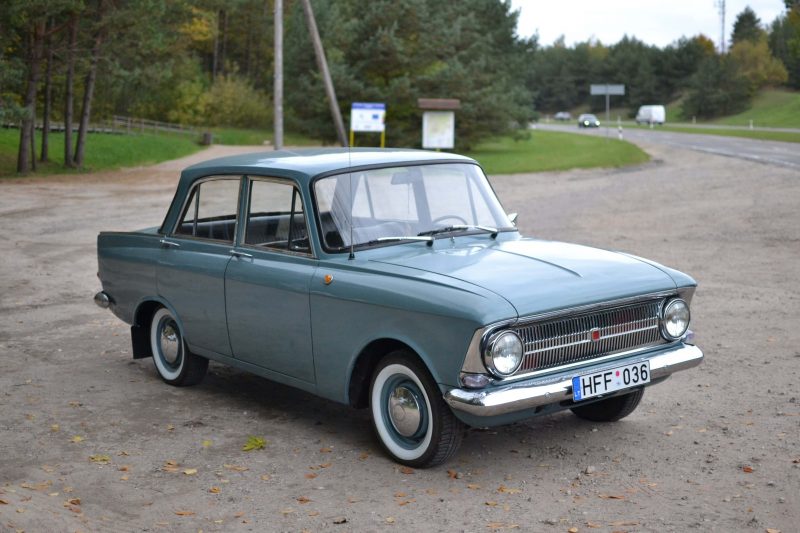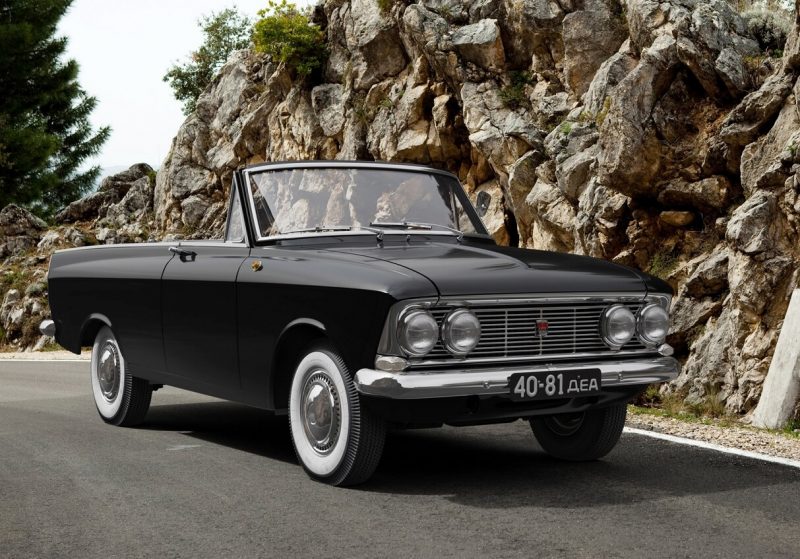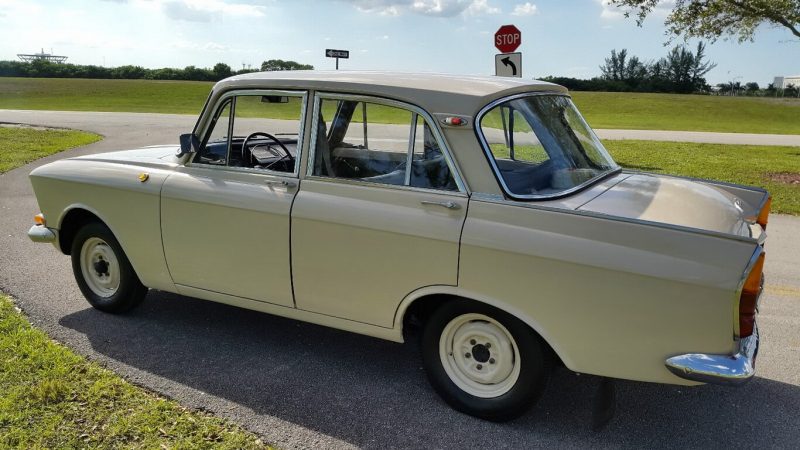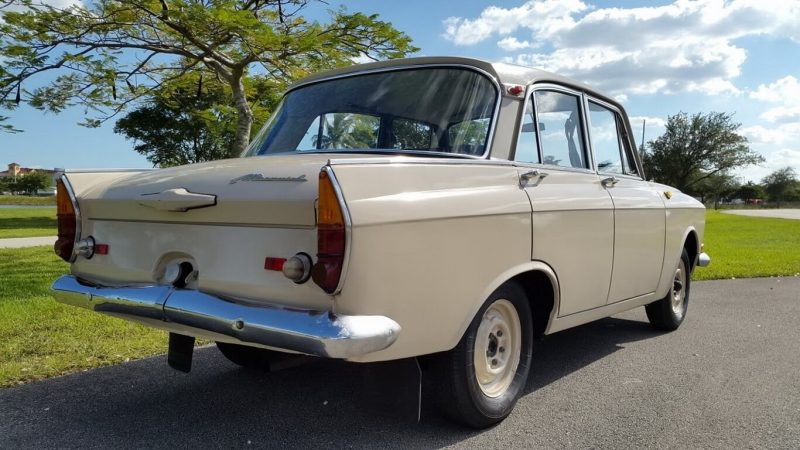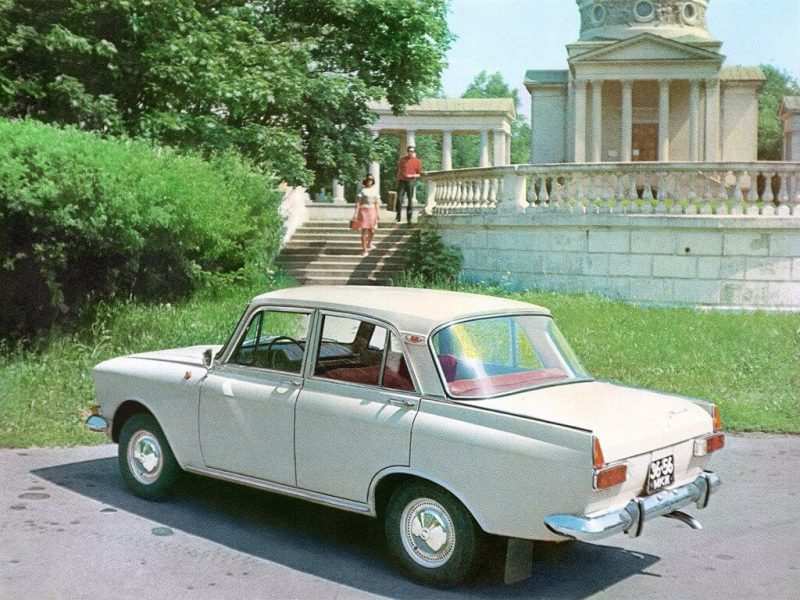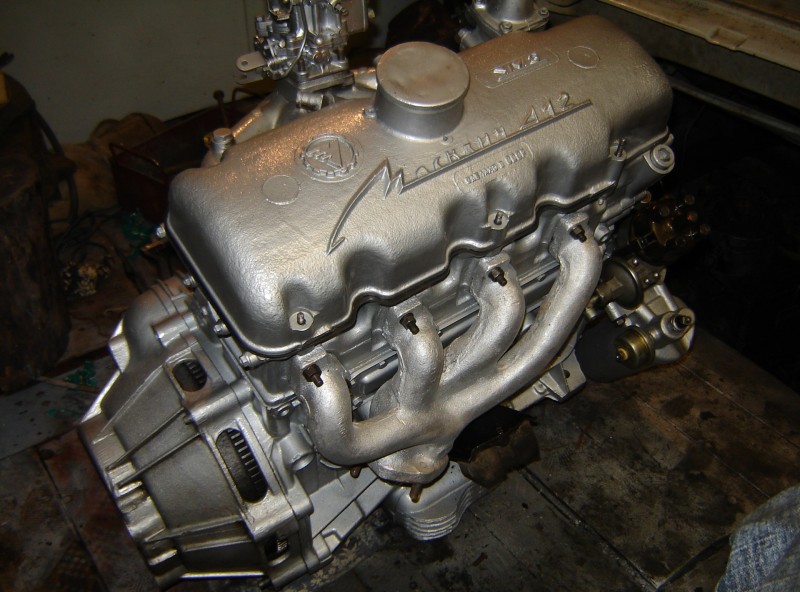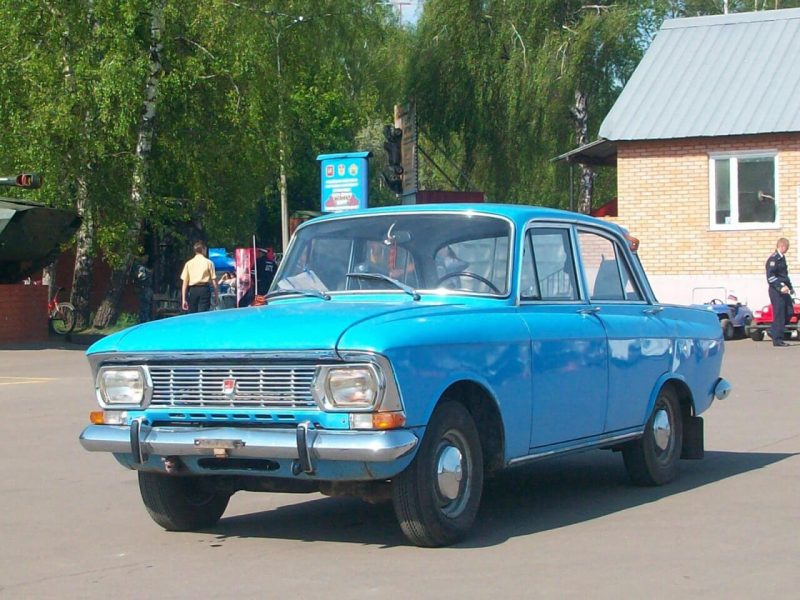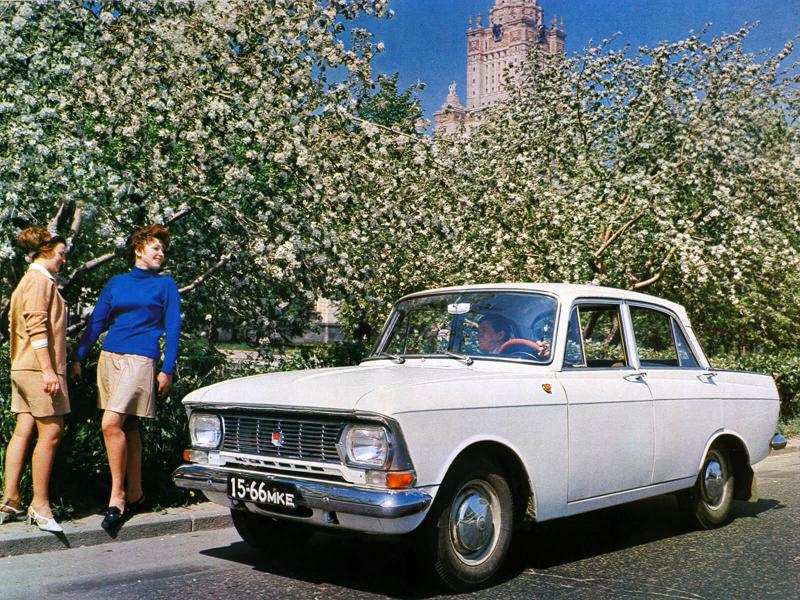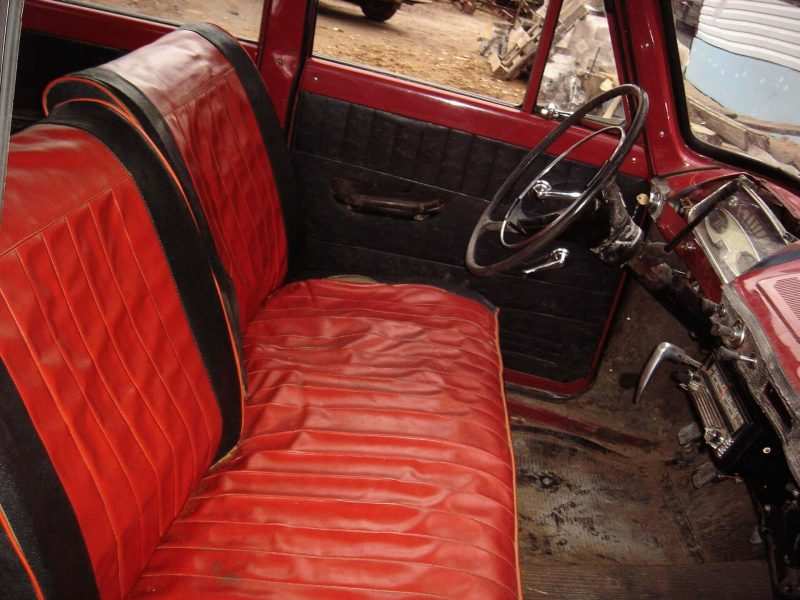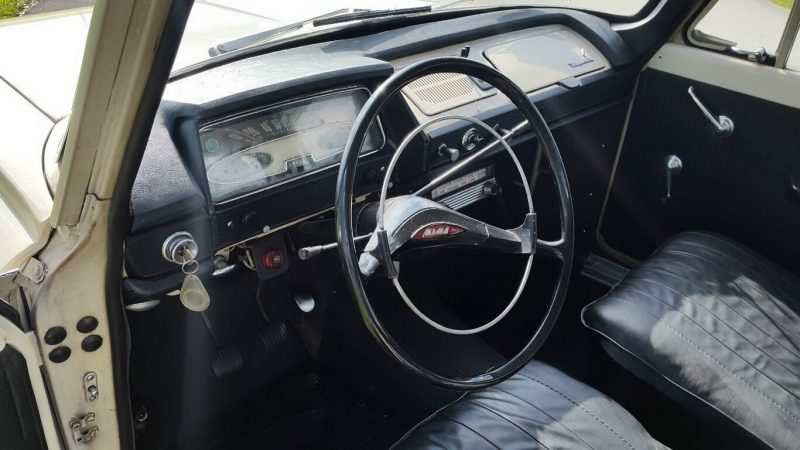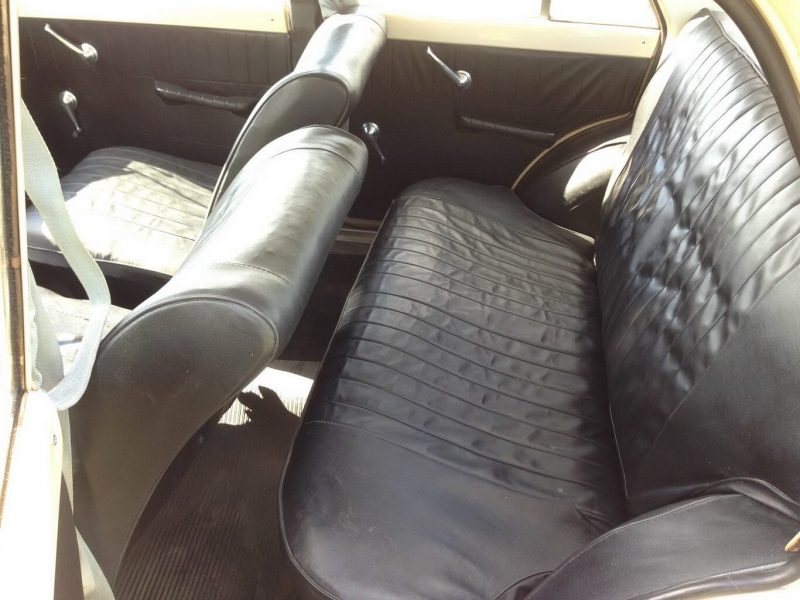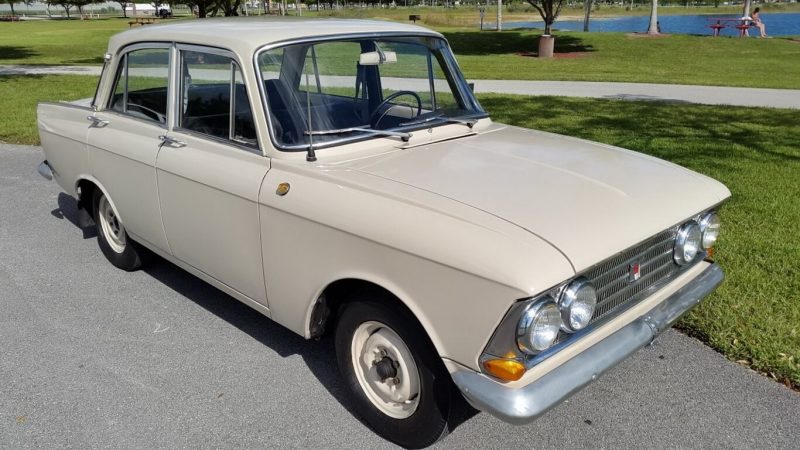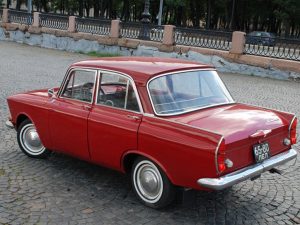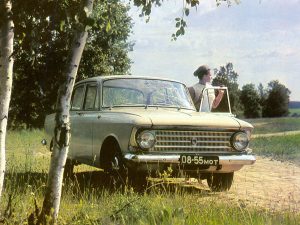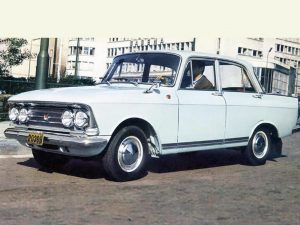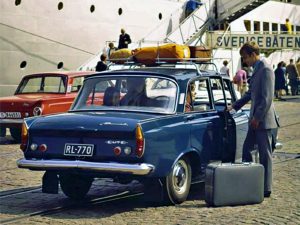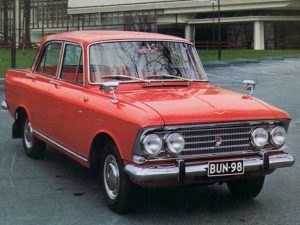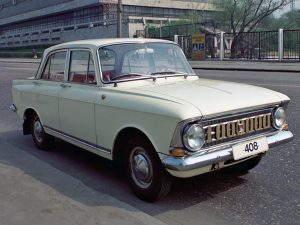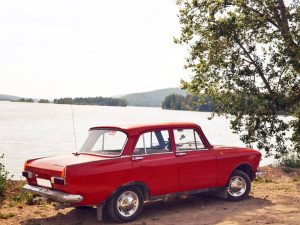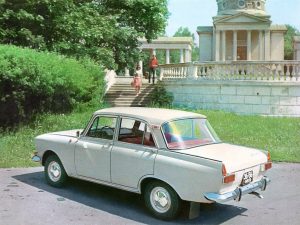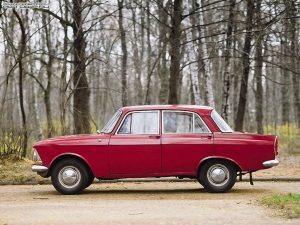Moskvich-408
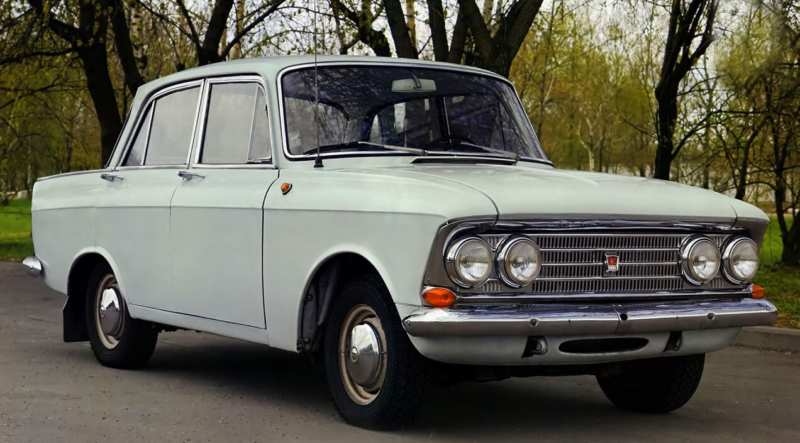
The Moskvich-408 is a Soviet rear-wheel drive car of the II group of small class in the sedan body. It was produced at the Moscow plant of small cars in the period from 1964 to 1975. It was born with a modern and elegant appearance, which was not inferior even to foreign-made cars. The whole model range is Moskvich.
Car history
The designer of this fresh Soviet car was Edward Molchanov. Almost one third of the production volume of the 408th was exported. After this car was created even more powerful model – the 412th Moskvich. The development started in 1959, when the chief designer was still Ivanov.
A special emphasis during the design decided to pay design component, because numerous technical aspects of the car inherited from the previous generation, which during its production was constantly improved, which led to the 403rd model, which came into serial production in 63rd year.
The latter had an old-style bodywork (1956), but already had the most important technical component of the future 408th model. For example, a model made of plasticine was created on the surface of the body of the “living” serial model – Muscovich-407. A little later they decided to move on to building standard layouts with full dimensions. There were at least three variations in appearance and a large number of different search sketches.
At the same time, along with the standard variant of sedans there was a design of variations with bodies “universal”, “van”, “coupe” and “convertible”. The debut models had a “two-storey” design of the front end, as in the previous car, and 15-inch wheel rims.
Further, due to the reasons of increasing the exterior of the sedan, we decided to reduce the size of the wheels to 13 inches. The radiator grille was already single-row, however, as well as on the majority of those cars which on those years were made in the western countries.
In the period from 1961 to 1963, 4 prototype cars were designed, where there were different variants of design and tests were conducted. The debut cars of the 408th model series production left the factory in September 1964, and after two years the 100000th car of this type left the factory.
It was an export modification of the 408E, where there was an improved appearance and more powerful power unit. There were no special innovations in the aggregate department. As it was mentioned above, the majority of the units and technical solutions of Moskvich-408 were inherited from the machines of the previous family produced in those years – the M-407, and in particular the “adapter” M-403.
For example, there was a top-valve power unit (except for a small difference, such as a new two-chamber carburetor K-126), a four-stage mechanical gearshift box, with a switch installed on the steering column through the shaft, concentric steering (on models 402 and 407 it was located at the side of it coaxially).
The front suspension with a pair of ball joints on each side (the 402nd and 407th models had one ball joint on each side and one cylindrical finger), braking system with automatic adjustment (“self-winding”) and so on.
These nodes have been developed quite recently, and they have been continuously improved, so they could be fully compliant with this level of technical component. Such approach of moderate introduction of fresh units and units by means of “transitional” models without radical reorganization of release answered to more restrained capacities of the Moscow factory of small-capacity cars. If we compare, for example, with GAZ, which already for those years allowed itself to design vehicles “from scratch”, almost without repetition of the technical component of the previous generation.
Modernization
During the whole period of its production the machine has been significantly modernized more than once. One of the most important improvements can be considered an upgrade in December 1969, when the machine began to produce in a new bodywork solution, which received a different design of the front end.
There was a presence of rectangular headlights, new headlights, new grille and other changes. The aft part of the sedan received the same presence of rectangular rear lights, where there were triangular direction indicators and so on.
A similar bodywork at the same time was purchased by the 412th model of Moskvich. Before that, the 408th and 412th models were produced in the outdated, 408th body, but for Moskvich-412th body it was decided to change a little to install a new 1.5-liter 75 hp engine.
To be more precise, there were two body variations – the first 408th, which, if necessary, adapted to the installation of the 412th engine, as well as from a certain moment, the so-called “unified”, which retained its exterior, as in the previous model, but has already adapted to mount two variations of the engine without any modifications.
Already at the beginning of December 1969, it was replaced by a standardized bodywork, but on which there was already a new exterior design. It wouldn’t be superfluous to remind that there was no “transitional” car from the M-408 model to the 412th – both cars were produced at the same time and together went through the stages of improvement, although if you take the latter, the 412th model was often the leader.
The production of two vehicles was stopped at the same time with the transition to the production of M-2140/2138 subdivisions, and in the future the production of vehicles of this generation, with 412 and 408 engines was produced under the new designations also in parallel.
The new bodywork met all the requirements of Europe in terms of passive safety, and therefore, theoretically, any 408th or 412th model in the body could be exported, which was noticeable by the designations of improved vehicles, which were added to the letters of the IE. Restyling in 1971 was reflected in the appearance of a new dashboard, which was fully covered with soft plastic overlay. In May (or July), the 73rd Soviet vehicle received a new gear selection mechanism, where there was a floor lever and a short underground backstage.
All other improvements could not have such a significant impact on the exterior and the consumer component of the machine. Muscovitch-408 was removed from production in 1976 during the transition to the improved generation M-2140/2138. But his successor in the model group was the model Moskvich-2138, which represented the same 408th model with improvements, which were similarly received by the regular car M-2140 relative to M-412. And today you can find on the Internet Moskvich 408 tuning – these cars look very impressive.
Body
The body of the standard car was self-supporting, all-metal, “four-door sedan” type. There was a modification in the body of the “five-door wagon”, which was produced under the name of Moskvich-426, and there was also a van on its platform – 433rd Moskvic.
Our guest had a stylish and modern appearance in the 60s, as well as a high level of comfort and equipment for his time. In 69th year, on the 408th and 412th models began to install a new body, which had rectangular headlights, produced by Germany.
There were also horizontal taillights and separate triangular direction indicators. The large glazing area, which improved the driver’s and passengers’ visibility, was a pleasure. There was also an elegant glass frame with shiny overlays. It is impossible to say that the design was copied, because it was Moskvich who had the presence of a section of the sidewall, made with a hood and decorative overlays on the side of the grille of a massive “visor” over the headlights, the central location of the hatch of the gasoline tank, and so on.
Interior
Until 1968, the car was delivered in the front of the cabin with a sofa seat, which had separate backs. A little later, separate seats were installed on the car, both for the driver and for the passenger sitting next to him.
In both variants, the backrests of the seats were able to fold, creating a sleeping space. Inside the Soviet sedan, they decided to trim the interior of the cabin with a leatherette to the color of the body, and its variants of coloring are different, and the plastic parts used inside the car are used less.
For example, already at the beginning of 1966 the dashboard began to have soft plastic overlays – this was decided to increase the safety level of the driver and the passenger sitting next to him. Already in the 79th plastic overlays were placed on the body racks, and in the 71st dashboard the plastic overlays were made out as a whole.
The heating system was already able to take in air both inside the cabin and outside. In addition, it was possible to significantly increase the efficiency of the heating system by significantly increasing the active surface of the heat exchanger.
In addition, the heat inside the sedan was better distributed thanks to the six-blade fan, which was driven by a powerful electric motor. The luggage compartment of the new car had not so much volume – 372 liters. It also had a low loading height. This minus significantly reduced the convenience of its use. The design staff decided to place the spare part at the bottom of the trunk flat on the left side, which only took away the already small volume.
Because of the niches of wheels protruding towards the cabin, it was rather inconvenient for three adult passengers to be on the back sofa. But the legs of the chauffeur and the front passenger were more spacious than, for example, in Zhiguli, as the niches of the wheels moved forward.
Specifications
Powertrain
Moskvich-408 was equipped with a four-cylinder in-line overhead valve longitudinally located carburetor engine, which had a volume of 1,358 liters and produced 50 horsepower. Each cylinder had two valves. The preferred gasoline was AI-80.
If you compare the car with its previous models, the 408th model has increased the power of the engine, which has a good effect on the controllability and reliability of the braking system. The engine received a new two-chamber carburetor K-126.
All these innovations, together, provided acceleration of the sedan to the first hundred kilometers in 29 seconds. Maximum speed was at 120 km/h. The fuel tank was designed for 46 liters. In urban conditions, Moskvich consumed about 6.5-liters per 100 kilometers.
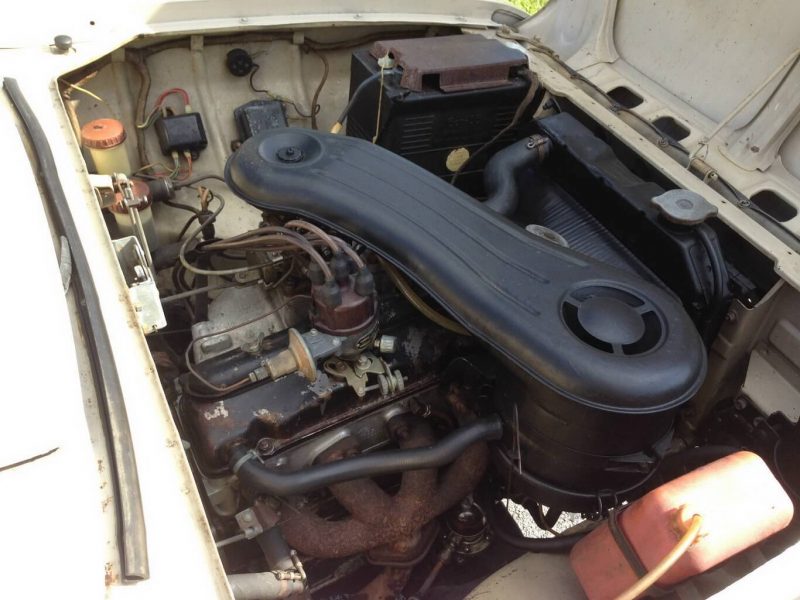
Such motor power was enough for those times, but only for the equipment of the initial degree. As a result, they decided to develop a modification of the 412th Moskvich, which already had a completely different 75 hp engine made of aluminum and is an overhead valve. This motor had consistently good traction characteristics and high elasticity.
Transmission
Together with the engine, the previous three-way four-speed manual gearbox worked. Synchronizers in 2nd, 3rd and 4th gear were provided.
Until May-June 72, the control lever of the gearbox was located on the steering column, in addition to the cars that were in right-hand drive version, and a little later it was decided to move to the floor. The switch lever on the side cover roller became slightly longer and cast.
Pendant
If you touch the suspension of the 408th model, it was distinguished by high reliability and survivability. The front suspension was a spring kingpinless independent suspension with transverse levers. It was assembled on a stamped crossbar.
Modifications
- Moskvich-427IIE on the platform M-412IIE – from the outside was almost no different from the one produced at the same time and retailed only by the engine M-426IIE on the platform of the later M-408IIE;
- Muscovich-408 – represents a standard car in the sedan body;
- Moskvich-408E – was an export version with two-pharalled radiator lining. The modification also met European safety standards;
- Moskvich-408I – was an export variation of the sedan, where there was a four-headed radiator lining. Also met European safety standards;
- Moskvich-408IE – was an export version of the sedan, also met European safety standards;
- Moskvich-408P – represents an export variation of the sedan, where there was a right-hand steering wheel. The model met European safety standards;
- Moskvich-408Yu – an export variation of the sedan for countries with hot climates;
- Moskvich-408K – was an export set for large-capacity car production;
- Moskvich-408M – car for medical service;
- Moskvich-408T – served in a taxi company;
- Moskvich-408B – the modification had manual control (for disabled people);
- Moskvich-408U – a training variation of the sedan, where additional pedals and steering wheel were installed.
Pluses and minuses
Pluses cars
- New and fresh sedan appearance;
- Reinforced power unit;
- Appceptable ground clearance height;
- Rugged car;
- There is a heating system;
- Mounted hydraulic brake booster;
- The exterior side mirrors are rear-view mirrors;
- Li>Little fuel consumption;
- Good visibility thanks to improved glazing;
- Maximum speed was 120 km/h;
- Many different modifications;
- Realized abroad;
- Folding front seat backs;
- Floor shift lever installation;
- Floor shift lever installation
- Become a more pleasant salon;
- Better quality interior decoration materials;
- Front suspension;
- Little turning radius.
Cons of a car
- He had no hydraulic power steering;
- Inside the rear passengers were a little crowded because of the wheels protruding inwards;
- Uncomfortable loading height in the luggage compartment
- Small baggage compartment;
- Only questions were raised about the heating system.
We sum up
Soviet sedan Moskvich 408th could become a good car for his time. It already had more sharp corners, which were popular in many countries around the world, it got a more powerful powertrain, which allowed it to improve its dynamic characteristics. This did not have a strong impact on fuel consumption, but gave a significant increase in power. In general, the 408th model has a large number of innovative solutions in the technical field.
It’s nice that the car finally began to be equipped with external mirrors, inside began to install a heating system, the backrest of the front seats folded, creating a sleeping place. Also in the car there were realized numerous small improvements, such as an enlarged fuel tank, adjustable braking system, more pleasant three-spoke steering wheel and so on.
The vehicle of the Moscow Automobile Plant could already comply with European safety standards, which indicated that the model could be successfully implemented outside the Soviet Union. Especially the front suspension could handle many pits and unevenness, which were provided. In general, we can confidently say that Moskvich 408th made a confident step forward in the automotive industry.
We advise you to read the article: “History of the car “Moskvich” and AZLK enterprises


